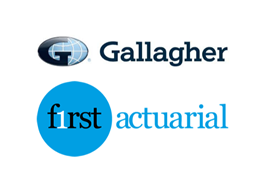The government closes its consultation on financing growth in innovative firms this week as it looks to increase scheme investment in ‘patient capital’, but concerns persist over the suitability of this asset class for pension schemes.
The consultation paper examines ways to lower barriers to the strategy, which involves long-term illiquid investments in start-up companies, for defined benefit and defined contribution schemes.
According to the report, “overseas institutions invest more in UK venture capital funds than UK pension funds”. The paper picks up the baton from the Myners report, which investigated early-stage institutional investment in the UK in 2001.
You don’t want patient capital, you want patient equity
James King, Fig
Consider venture debt instead
The paper argues that an optimal asset allocation strategy should involve investment in patient capital.
Matthew Simms, director at consultancy P-Solve, is not persuaded by this argument. The asset class is fraught with risk for DB schemes, is too similar to leveraged equity, and returns are driven by the meagre number of successful start-ups, he said.
“Generally, it’s a difficult asset class to invest in,” he said. “The report talks about 11 per cent of start-ups from 1998 surviving 15 years-plus. The flip side of that is, the vast majority didn’t.”
Skill on trustee boards is paramount to a successful venture into patient capital, according to Simms.
The paper echoes the Department for Work and Pensions’ concerns in its DB green paper over “whether a conservative interpretation of trustees’ responsibilities, coupled with the increasing maturity of schemes, may lead to a sub-optimal allocation of assets”.
Simms gave more credence to venture debt as a way for schemes to finance start-up companies. Venture debt is a relatively undeveloped market in the UK.
“Venture debt could potentially be a more interesting asset class for pension schemes,” Simms said. Venture debt investment in the UK is currently less established than in the US. "That market maturing might be a better way to be able to fund [start-ups],” he proposed.
What about DC?
The paper states that the UK’s DC schemes’ immaturity relative to DB schemes “should mean that long-term investments such as those provided by patient capital are more attractive”.
Dinesh Visavadia, director at Independent Trustee Services, agreed with Simms’ verdict on patient capital investment for DB schemes, saying that they are “too mature” and therefore reliant upon income to make significant inroads into the asset class.
He did, however, pinpoint DC schemes as plausible investors in patient capital.
“On the DC side I think there is a really compelling economic argument that the people who are saving, and their savings, can be used [to fund start-ups] and the people can then see a direct economic benefit for their pensions as a whole, for the country as a whole. I think there’s a tremendous alignment of interest,” he said.
“The problem with the DC world is that the assets are so small, and also I think the trustees may have a question around, 'Should we expose the members to so much risk or not?'” he added.
Replace patient capital with patient equity
James King, founder of venture capital firm Fig, cited a lack of skilled venture capital managers as a major hurdle to copying the comparatively successful integration of US institutional investors and patient capital.
“The asset class is awful,” he said. "The majority of fund managers who are investing in venture capital, or angels that are investing in early stage businesses have their expectations wildly mis-set… the average venture capital fund in the UK and Europe is producing returns that are comparable with low-risk, highly liquid tracker funds,” he added.
He argued that the government needs to facilitate shorter holding periods for angel investments, in order to increase liquidity and entice institutional investors.
“You don’t want patient capital, you want patient equity… you don’t want angel investors holding onto angel investments for nine, 12, 15 years.”
The Enterprise Investment Scheme was set up by the UK government to encourage angels to invest in early stage ventures, but King said more tax breaks were needed to encourage secondary investors to buy EIS shares.
The best way to harness illiquidity
Joshua Featherby of Cambridge Associates looks at ways for schemes to harness illiquid asset classes, such as private equity, venture capital, private credit and real assets.
As things stand, the only beneficiary of zero-rated corporate capital gains tax for an EIS share is its first purchaser.
“If, however, that share never attracted capital gains, then suddenly there would be a huge incentive for institutional investors to buy out angel investors. And those institutional investors wouldn’t be encouraged to sell, and you would get patient equity,” he said.
This article has been amended since original publication to correct inaccuracies in the reporting of statements by James King.














